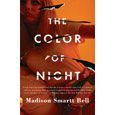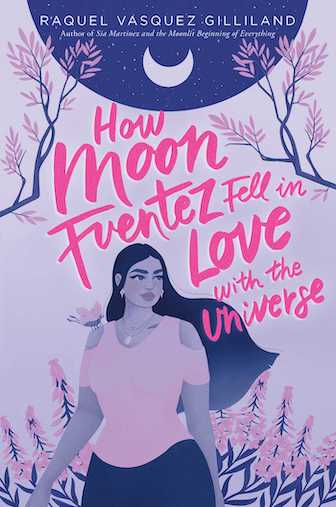Ugly Magic
In John Darnielle’s Wolf in White Van, a disfigured young man struggles with his demons
John Darnielle, lyricist/singer/guitarist for the folk-rock group The Mountain Goats, has again turned his hand to fiction in Wolf in White Van. The author of a previous, EP-length work of fiction, Black Sabbath’s Master of Reality (33 1/3), Darnielle has now produced an LP of a novel that delves into the damaged psyche of a disfigured young man. Darnielle’s fiction features the same keen eye for detail and gift for sympathy that characterize his songs, but readers unfamiliar with Darnielle’s music have more direct reasons for picking up this novel: it tells a compelling story and paints a stirring portrait of a soul at conflict with itself.
 At seventeen, Sean Phillips suffered a terrible gunshot wound to his face that turned him into a social pariah. He can’t shop at the grocery store or go to the movies without causing a disturbance, so he has retreated into isolation. For twenty years his only contact with the outside world has been through a role-playing game he created, Trace Italian, where participants navigate a post-apocalyptic world and seek refuge in the star fort. As the novel opens, the game, which is played through the mail, has retained a steady audience even into the age of online gaming.
At seventeen, Sean Phillips suffered a terrible gunshot wound to his face that turned him into a social pariah. He can’t shop at the grocery store or go to the movies without causing a disturbance, so he has retreated into isolation. For twenty years his only contact with the outside world has been through a role-playing game he created, Trace Italian, where participants navigate a post-apocalyptic world and seek refuge in the star fort. As the novel opens, the game, which is played through the mail, has retained a steady audience even into the age of online gaming.
Sean envisioned his fictional world as a safe place for people who, like him, feel alienated from society. That sense of safety disappears tragically when two young Trace Italian players take the game into the real world and find themselves stuck in a Midwestern snowstorm. Their grieving parents want to prosecute Sean for the reckless endangerment of minors. In court Sean tries to explain that all he ever wanted for “the Trace” was to create “a place where I could have adventures” and “to share those adventures with other people.”
Readers know from the start that Sean has been injured by a rifle blast, but Darnielle makes a mystery of the accident’s details. Sean’s parents have settled on a simplistic, “linear” explanation of the shooting that blames the violent media Sean ingested as a child. Their version of the traumatic event, Sean says, “told a story about me staying up late and reading things and watching things that told me to do something awful, of staring too long at a static screen.” He thinks they have misunderstood his mind completely: far from influencing him toward bloodshed, those fantasy books and movies—the Conan series, Krull, the Chronicles of Gor, and many others—gave Sean “a sort of shelter.” What he needs protection from, Sean concedes, is hard to pinpoint. His inability to explain this perception of the world’s essential malevolence leads to a total breakdown in communication with his distraught parents.
 Over the course of Wolf in White Van, the pity initially aroused by Sean’s plight subtly changes. His taste for escapist fictions, like his fixation on alternate worlds where he can wreak vengeance on evil-doers, devolves from an understandable reaction to his own powerlessness into a creepy maladjustment. His obsession with disaster stories was disturbing to his mother even before the incident with the rifle; afterward, it is simply too much for her to bear, a feeling that Sean doesn’t appear to understand.
Over the course of Wolf in White Van, the pity initially aroused by Sean’s plight subtly changes. His taste for escapist fictions, like his fixation on alternate worlds where he can wreak vengeance on evil-doers, devolves from an understandable reaction to his own powerlessness into a creepy maladjustment. His obsession with disaster stories was disturbing to his mother even before the incident with the rifle; afterward, it is simply too much for her to bear, a feeling that Sean doesn’t appear to understand.
Darnielle does a masterful job of depicting what it feels like to be a freak. Socially marginalized even before the accident, Sean has now grown accustomed to playing the part of the monster. He is well aware of how disturbing his appearance is to others and feels perversely satisfied on the few occasions when someone he meets, usually someone young, acknowledges his hideousness with a gasp of disgust. He recognizes that his mutilated face falls “outside” the range of normal human encounters. “People don’t expect to meet me,” he says. “They don’t know they have expectations, but I show them by counterexample what their expectations were.”
Slowly, by understated implication, this novel grows into a study of evil. The title comes from late-night religious programs, in which evangelists decry the practice of backmasking in rock music. In one song played backward, amid screeching that “sounded like a hole opening up in the earth out in the dark, abandoned desert,” viewers are supposed to hear the words wolf in white van. None of the sanctimonious television commentators can say exactly what those words mean, but they agree that it is “a hellish picture to paint.” For them—and, increasingly, for the reader—“the world is a place full of ugly magic.”
With Wolf in White Van, John Darnielle may have taken a break from creating music, but he is still precise in the use of his literary gifts. His portrayal of Sean’s inner life, haunted by guilt and plagued by long-simmering aggression, hits few false notes. The novel leaves readers with the discomfiting notion that the world contains terrifying threats and unpredictable agonies, but the scariest demons we will face are the ones that live inside us.

Sean Kinch grew up in Austin and attended Stanford University as an undergraduate. He later returned to Austin, where he earned a Ph.D. in modern fiction from the University of Texas. He now teaches English at Montgomery Bell Academy in Nashville.


